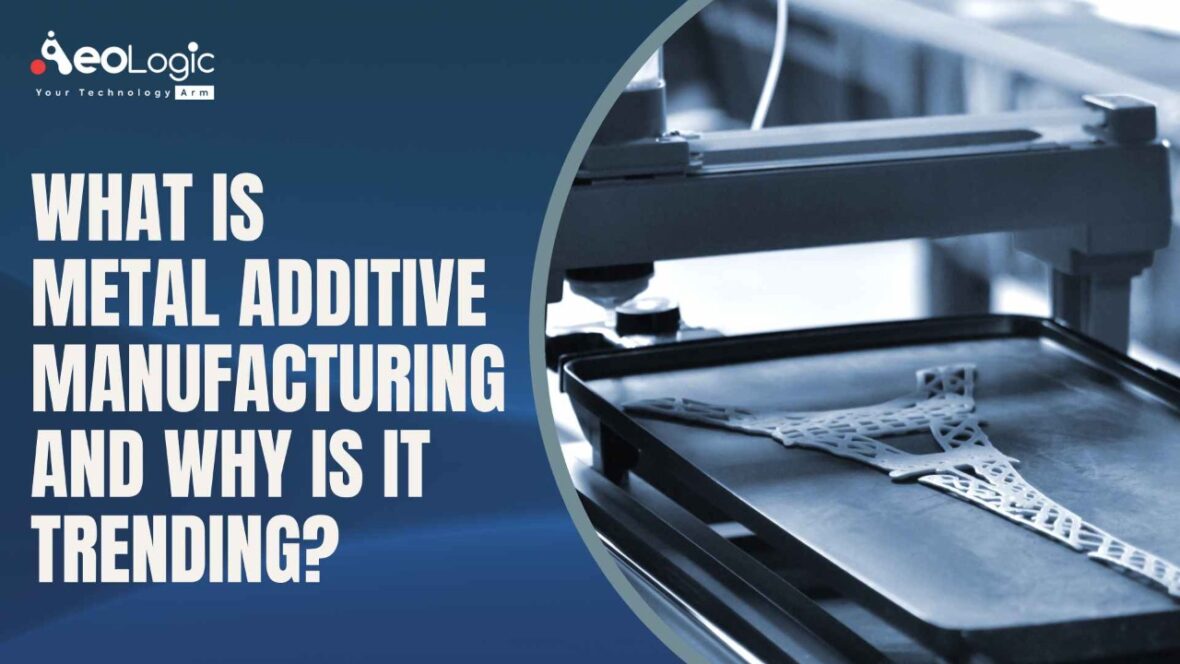Metal additive manufacturing (sometimes known as Metal 3D Printing) is the process of creating a three-dimensional, solid object of nearly any shape or design with the help of a computer-generated framework. The 3D metal objects are usually made by layering fine metal powders layer-by-layer with a bonding agent used between layers.
What is the mechanism behind additive manufacturing work, and how does your industry fit in? Metal Additive Manufacturing is opening doors of opportunity for complex component design. In an increasing number of markets, with a broadening range of order volumes.
Also read: Automation Boosts Additive Manufacturing Production
How Does Metal Additive Manufacturing Work?
Metal additive manufacturing is a process that incorporates fine, metal powders to make strong, complex components. Computer software cuts the design into several layers that act as the framework for the additive manufacturing machine to follow.
Being able to make 3D objects of virtually any shape is what sets metal additive manufacturing apart from other manufacturing processes like metal injection molding.
Let’s understand metal additive manufacturing processes in detail.
There are following three primary methods leading the metal additive manufacturing trend:
Powder bed methods cover a thin layer of powder over the powder bed surface. Once this layer is spread, high-powered thermal energy which is a laser or electron beam is used to selectively meld. And occasionally melt the powder together.
Directed energy deposition is where the raw material is deposited incorporating a nozzle at the same time as it is melted with a heat source. This process is done over several layers to make a solid object.
Metal binder jetting. The liquid binder is imprinted over thin layers of powder and an object is created layer by layer by gluing the particles together. And the object is then treated either sintered or infiltrated to harden it.
These methods take a transformative path to assembly and industrial fabrication. By using computer-aided-design software to direct digital hardware, metal additive manufacturing can accurately produce detailed geometric shapes. Moreover, with the meticulous deposition of layer upon layer of metal powders, lighter, stronger parts can be created. Hence, offering manufacturing operations more flexibility and greater efficiency.
Uses of Metal Additive Manufacturing
Manufacturers could speedily design and print test-ready products before investing in molds and equipment. Furthermore, for larger production runs using metal additive software. As the technology developed and additive manufacturing became more affordable, it has been adopted by a wide variety of industries.
The aerospace industry has been one of the major users of additive manufacturing. Aerospace companies are incorporating AM to design and construct highly intricate metal parts. Since otherwise would not have been possible using traditional methods.
Also, there’s less waste, aerospace manufacturers can trim down on weight without sacrificing structural integrity, which is important when designing aircraft.
The medical industry is also using metal additive manufacturing to create unique tools and instruments for specific procedures. They can make the exact tools they need in a fraction of the time. Also at a much lower cost, in-house to support complicated procedures.
Pros and Cons of Additive Manufacturing (Metal 3D Printing)
There are several benefits of additive manufacturing. However, it’s not ideal for every type of manufacturing. Here is a quick guide to metal additive advantages and disadvantages of consuming an additive manufacturing system for building metal products.
Advantages
1. Decrease space and cost requirements for storing parts by offering you the ability to produce parts on-demand locally.
2. Reduced waste without the need to cut parts from larger materials, which also aids to reduce manufacturing costs.
3. Speedily produce new products without needing to create molds.
4. Quick prototyping can rapidly accelerate product development and can aid you to attain a competitive edge.
5. Creating highly intricate parts with minimal effort or skill.
Disadvantages
1. Slow build times mean that additive manufacturing isn’t ideal for large production runs.
2. Higher upfront costs with more expensive equipment requirements.
3. For example, Consumer-grade printers typically have print beds that are smaller than one cubic foot.
Also read: What is Additive Manufacturing and How Can ERP Help It?
Conclusion
AM might not replace traditional manufacturing processes. Nonetheless, it provides many sizable benefits for manufacturers in a wide variety of industries.
If you’re interested in accelerating metal additive manufacturing, talk to the industry experts at Aeologic Technologies. Contact us to learn how we can elevate your manufacturing process and digitize your workflow.
FAQs
Why additive manufacturing is the future?
Compared to subtractive manufacturing, additive manufacturing offers different cost drivers and can compete with them. As well as beat conventional manufacturing processes in terms of cost and adaptability.
What is one of the greatest benefits of additive manufacturing?
One considerable advantage of additive manufacturing is producing complex parts from advanced materials with no tooling expense.






